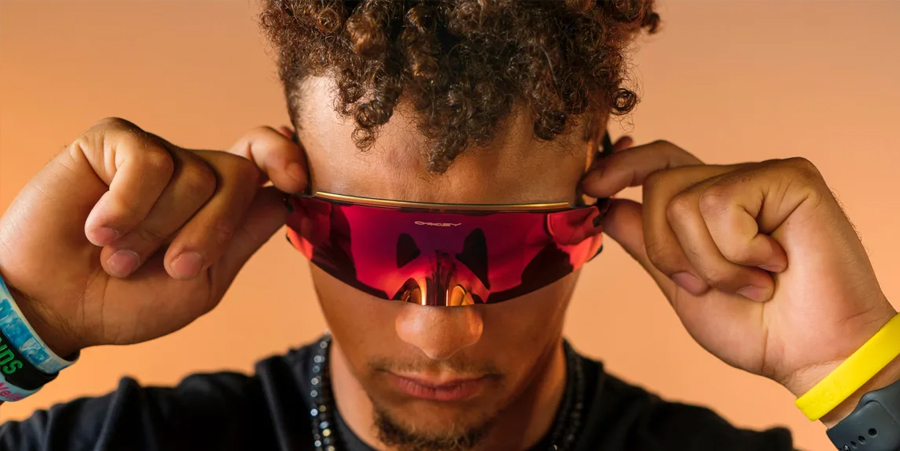The glasses are more ’90s than the ’90s.
Thank Michael Jordan, at least in part. When The Last Dance premiered in 2020, and we saw footage of the GOAT wearing classic Oakley Romeo frames, classic Oakleys came back in a big way (it didn’t hurt that ’90s nostalgia was already well underway). But Oakley doesn’t want to settle for issuing vintage rereleases. Its vice president of design Nick Garfias spent over a decade as a creative lead at Mercedes-Benz. And just as in the car industry, he wants performance eyewear to always be pushing design somewhere new.
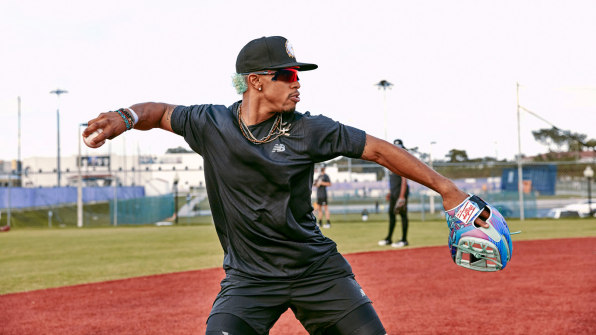
Premiering for the U.S. Olympic team this summer, the Kato is the company’s latest, boldest statement in eyewear. Priced at $291, the Kato is a remix of high-wrap glasses—a style of glasses designed for athletes—with a single seamless lens that wraps around your face to provide maximum field of view. Unlike any other glasses we’ve seen, it covers not just your eyes but the top of your nose, too.
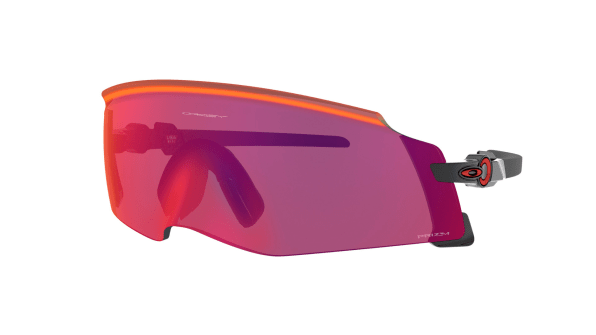
That lens is literally molded to wrap around your beak. That means Kato is as much a pair of glasses as it is a thin mask for the top half of your face.

This avant-garde design was born from an even more fantastical concept. “We thought literally of the image of fabric, or some kind of film going over your face and cloaking your face,” says Garfias. “How do we get as close to the face as possible without [building]contacts?”To get close to your skin, the glasses have no frame. Instead, the upper lip of the lens has been molded with an integrated bar, which curves over the top lip of the glasses, providing a rigid structure. (Previous high-wrap Oakleys don’t have this lip, and the glasses flex more as a result.)

The closer that the lens can be to your face, the wider your field of view, and the easier it is to see without lens distortion. A close fit is also less likely to shake on your face during activity. But if the glasses fit too close, they will trap steam on your face, and any impact would be more likely to injure the athlete’s face. So Kato is fit to live a few millimeters off your skin, with adjustments that could allow it to fit the faces of people from around the globe. And that was especially difficult given the nose.
The morphology of the face differs wildly from person to person, explains Garfias. That includes eye spacing and deeper and narrower brows. The eyewear industry is used to dealing with these issues. But noses are trickier. Noses are generally cut out from the frame, with nose pads keeping the glasses in place.
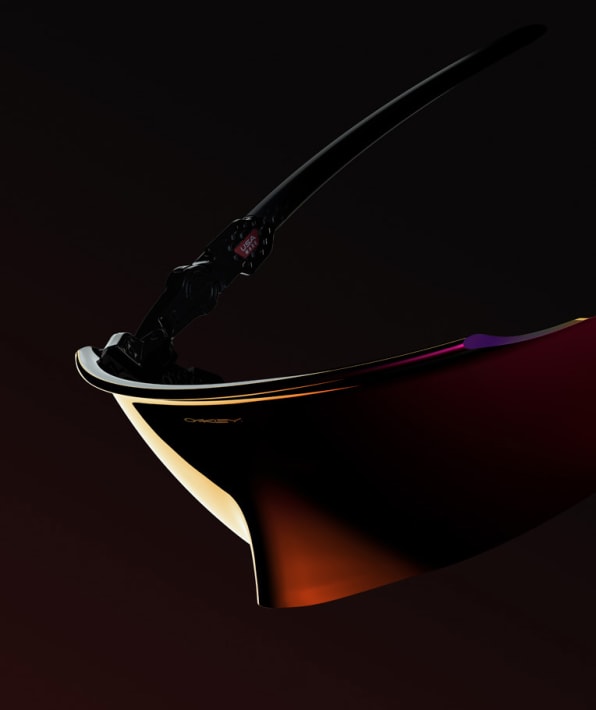
Molding the glasses around the nose was particularly difficult, since some people, such as Europeans, have pointier noses, while Asians tend to have flatter, wider noses. There was no secret to making this design work for everyone, says Garfias. Instead, it was a grind. Oakley has a database of face scans, composed of hundreds of people from around the world, that it uses to design products. The company designed Kato to fit these scans and then offered the product to partner athletes to test. After the athletes tried it, Oakley made adjustments and tested them against the scans again. Designers repeated this cycle again and again.
“I can’t tell you how many iterations we did moving the nose back and forth,” says Garfias, as tweaking one part of the glasses often necessitated tweaking a different part of the glasses all over again. The team ultimately included three different rubber nose pads, which snap onto the ambles (nosepiece holders) that have also been molded right into the lens. Additionally, the team built a unique rake adjustment into the arms—that’s the round mechanism you may have spotted in the temples of the glasses, which can unlock and allow you to tilt and angle the entire lens forward or back for a better fit. The result is close-fitting eyewear that can be adjusted to accommodate faces ranging from the small end of medium to XL. (Yes, faces have sizes, too!)
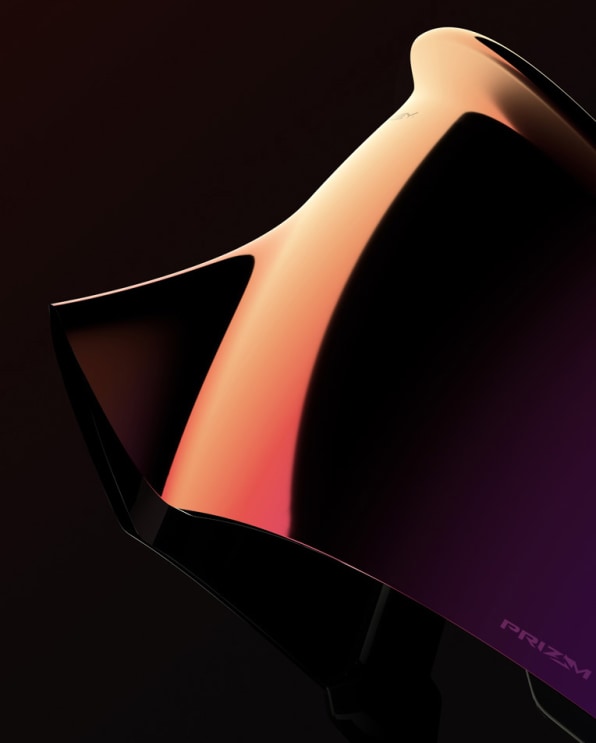
One big concession from the original concept that Oakley made was the vertical height of the lens. “The first design model was very thin . . . not quite Devo glasses,” says Garfias with a laugh. But the problem with such a thin pair of glasses is that it is hard to fit a lot of people in them. Any error in fit would create a band of light at the top or bottom, and if the sun leaks into sunglasses, why wear them at all? So the team increased the height of the lens to offer more wiggle room.Do the snug fit and nosepiece block wind better than most glasses? “I can’t claim any aerodynamic positives to it,” admits Garfias. Instead, he says the design was largely about offering that wide field of view while creating a new aesthetic. Athletes will also protect their noses better from sunburns wearing them, says Garfias, but in my experience, my own (German ski slope) nose still sticks out quite a bit from the lens. So even wearing Kato, sunscreen will be necessary—unless you want your nose to match the iridescent crimson of the lens itself.
This article first appeared in www.fastcompany.com

